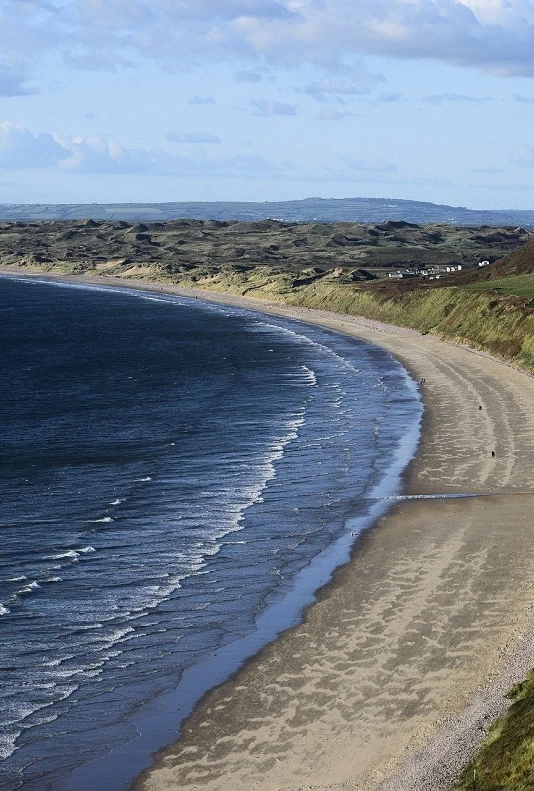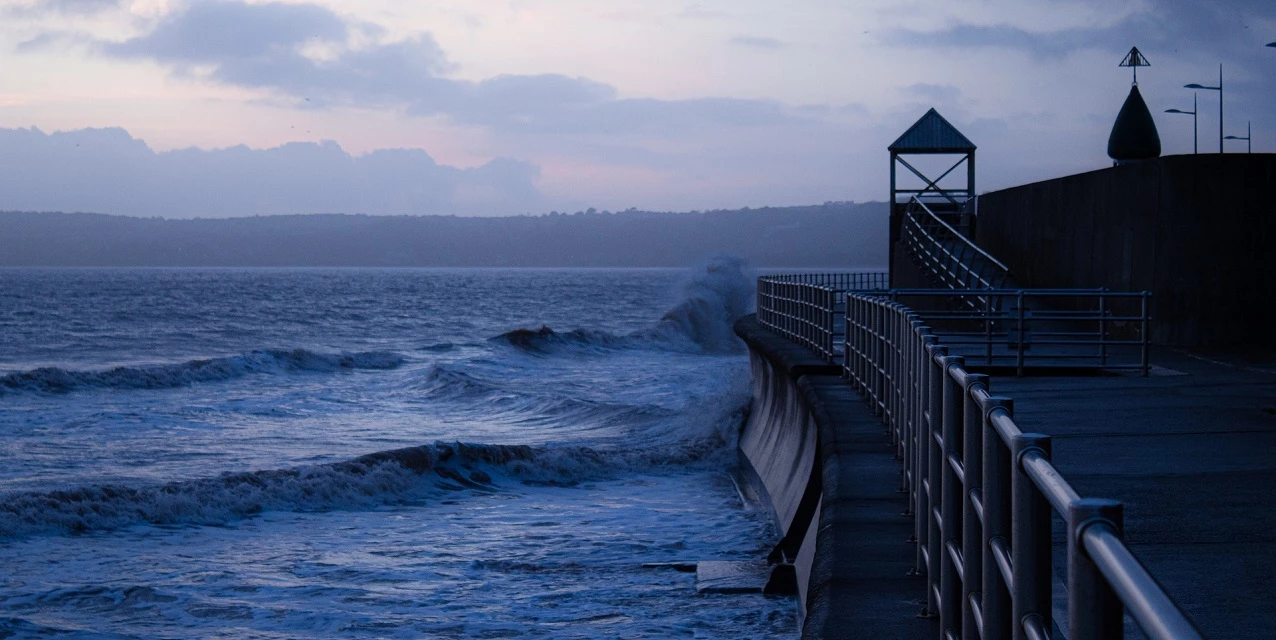Tidal power is one of the many types of renewable energy being explored in the UK, and SOCOTEC has played a key role in the development of a pioneering project.
Summary of works
Project: New Wave of UK Energy Generation
Location: Swansea

Case Study
Changing Tides

The UK Government’s commitment to provide 15 per cent of its energy from renewable fuels (up from five per cent currently) means that diversifying and expanding renewable sources of power is a national priority.
As an island nation with a high tidal range, the UK has a largely untapped marine energy resource. By making use of tidal sea level variations, tidal lagoons are able to deliver long-term, low-cost, reliable and predictable power to communities. A tidal lagoon power generating scheme comprises an area of tidal water enclosed by an engineered bund wall incorporating hydro-turbines. Tidal changes in the sea level outside the bund wall cause water to flow into or out of the lagoon through the turbines, generating electricity.
One such project, is the proposed tidal lagoon at Swansea Bay, which aims to capture the power of the Severn estuary. With an average tidal range of 6.5 metres, the Bay is an ideal location for a tidal lagoon scheme. The company behind the project, Tidal Lagoon (Swansea Bay) plc, intends for the scheme to be the first of several planned projects that will provide up to eight per cent of the UK's electricity demand. Upon completion, it is estimated that the plant will be able to continually generate electricity for 14 hours a day, with the potential to power 155,000 homes for up to 120 years.
The UK Government’s commitment to provide 15 per cent of its energy from renewable fuels (up from five per cent currently) means that diversifying and expanding renewable sources of power is a national priority.
As an island nation with a high tidal range, the UK has a largely untapped marine energy resource. By making use of tidal sea level variations, tidal lagoons are able to deliver long-term, low-cost, reliable and predictable power to communities. A tidal lagoon power generating scheme comprises an area of tidal water enclosed by an engineered bund wall incorporating hydro-turbines. Tidal changes in the sea level outside the bund wall cause water to flow into or out of the lagoon through the turbines, generating electricity.
One such project, is the proposed tidal lagoon at Swansea Bay, which aims to capture the power of the Severn estuary. With an average tidal range of 6.5 metres, the Bay is an ideal location for a tidal lagoon scheme. The company behind the project, Tidal Lagoon (Swansea Bay) plc, intends for the scheme to be the first of several planned projects that will provide up to eight per cent of the UK's electricity demand. Upon completion, it is estimated that the plant will be able to continually generate electricity for 14 hours a day, with the potential to power 155,000 homes for up to 120 years.
The project, located approximately five kilometres south-east of Swansea, will include 9.5 km of seawall to create a lagoon some 11.5 km2 in area. This wall will run out to sea from the mouth of the River Tawe and come ashore at Crmlyn Burrows, to the west. The Burrows is a world renowned nature reserve and a site of specific, scientific interest (SSSI) that contains protected species and habitats including an extensive dune system.
Swansea Bay Tidal Lagoon is classed as a ‘nationally significant infrastructure project’ under the Planning Act 2008 - meaning that planning permission has been managed by the UK’s Planning Inspectorate. This body is responsible for making a recommendation to the Department of Energy and Climate Change (DECC), which has the ultimate say on whether the project is given permission to proceed. Information was required from the Front End Engineering Design (FEED) stage up to planning consent application.
Hidden Threats and Ground Investigation
Swansea Docks was a target for air-dropped ordnance during World War II. Based on the findings of an Ordnance Threat Assessment, the site was regarded as being of medium to high risk. To obtain a better understanding, SOCOTEC was brought on board to gather in-situ data from a magnetometer survey, from which BAE systems was able to accurately confirm the safety of the bay.
The initial ground investigation, designed by Atkins, was carried out by SOCOTEC as principal contractor over a four week period during summer 2013. The variable nature of the environments between the beach and nearshore demanded the use of a range of investigation techniques for the different site zones: Zone A (furthest offshore), Zone B (intertidal) and Zone C (upper intertidal/beach).
Given the high costs of marine ground investigation, a key challenge was making sure the scope of the investigation would properly support the planning application.
SOCOTEC drilled exploratory holes spaced over hundreds of metres focussing them in the proposed turbine area, the bund wall footprint, potential dredging zones and the central ridge identified in the geophysical survey.
The ground investigation was phased so that preliminary information could be gained from cone penetration tests (CPT) and underwater sediment sampling (vibrocoring), prior to finalising the overwater borehole requirements.
Zone C works comprised four dynamically sampled boreholes using a restricted access rig with adjacent CPTs from SOCOTEC's medium crawler unit.
Seven overwater boreholes were drilled by SOCOTEC from a jack-up platform. These were carried out by cable percussion boring through the superficial deposits using a Dando 3000 rig, and continued with Geobor S triple tube rotary coring of the underlying bedrock using a Beretta T51.
Nine CPTs were carried out to a maximum depth of 17 metres from a survey vessel using a Datem Neptune 5000 seabed CPT unit. These were used to provide additional information on the soil conditions between boreholes. Dissipation tests were also performed in conjunction with CPTs to assess consolidation properties of the softer superficial deposits.
Ten vibrocores were carried out using a six metre long, 100 mm diameter vibrocorer operated from the survey vessel, to recover samples for laboratory testing. These were then used to determine the suitability of near surface materials for dredging and reuse in the bund wall construction.
Laboratory Testing and Reporting
Soil and rock samples obtained during the investigation were transferred to SOCOTEC's geotechnical laboratory near Doncaster for testing to determine index properties, strength and stiffness, permeability and chemical composition relating to concrete durability. The test information was used, together with the field test data, to provide parameters for preliminary stability and seepage analysis for the proposed embankment and cut off wall. Assessment of the material was conducted to determine its suitability for reuse in the construction of the seawall.
Selected soil samples were analysed by SOCOTEC at the Bretby environmental chemistry laboratory in accordance with the requirements of the Centre for Environment, Fisheries and Aquaculture Science (CEFAS) suite of tests. This assessed the suitability of the material for reuse and disposal from a geoenvironmental perspective.
Daily records from the in situ testing and exploratory holes were provided by SOCOTEC to Atkins on an on-going basis during the fieldwork. Detailed logging of the materials recovered, in accordance with British Standard BS 5930+A2, was carried out by SOCOTEC's staff on site, together with sample photography, to provide a permanent visual record of recovered samples, and sub-sampling, to obtain suitable specimens for laboratory testing. The investigation findings, including borehole logs, CPT records and laboratory test data, were provided to Atkins in a series of detailed geotechnical reports. The information was also provided in digital format for easy integration into the engineer’s and client’s data management systems.
An Extensive and Specialised Offering
SOCOTEC's phased approach and the team’s in-house expertise meant that there was much more control and flexibility available than is typical in similar projects. The integrated offering allowed SOCOTEC to provide a cost-effective, end-to-end service for the client.
To successfully meet the clients tight schedule, SOCOTEC identified the most critical and pertinent sets of data so they could be delivered within the agreed timescales.
SOCOTEC's preliminary investigation formed a crucial part of the Planning Inspectorate’s report to the DECC. In June 2015, Energy Secretary, Amber Rudd, approved plans for a £1 billion tidal lagoon project in Swansea Bay.
Simon Holt, principal engineering geologist, Atkins said: “SOCOTEC's preliminary ground investigation of the bay has allowed us to obtain complex data regarding the geological makeup of the bay. This information informed the early stages of the planning process and demonstrated the bay is safe to undergo development.”
Dan Mallett, operations manager, SOCOTEC's Infrastructure Services, commented: “Due to the location of the Swansea Bay Tidal Lagoon project, obtaining sufficient geotechnical and geoenvironmental data was a complex task.
“By working in partnership with Atkins and through our extensive range of ground investigation services, we were able to deliver high quality geotechnical results for the Tidal Lagoon scheme within the tight timeframe.




